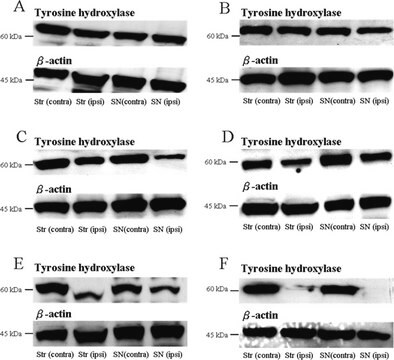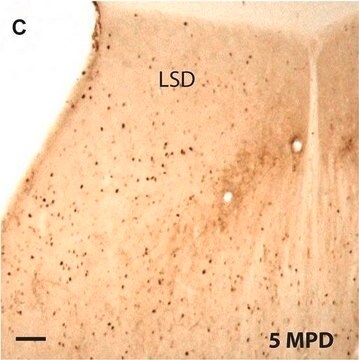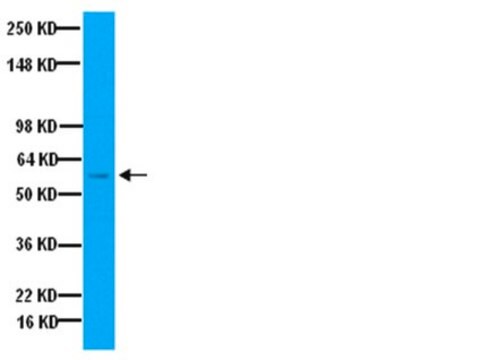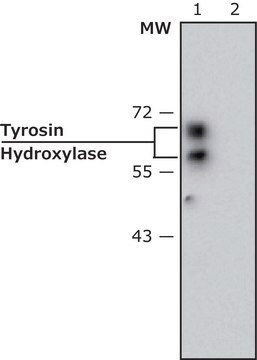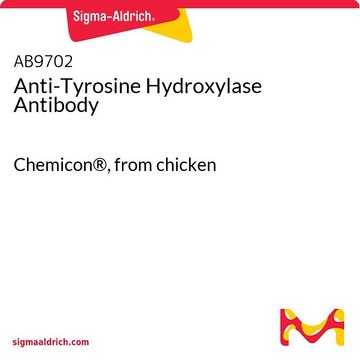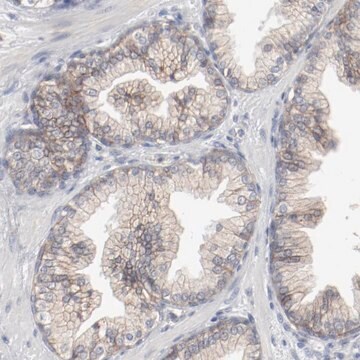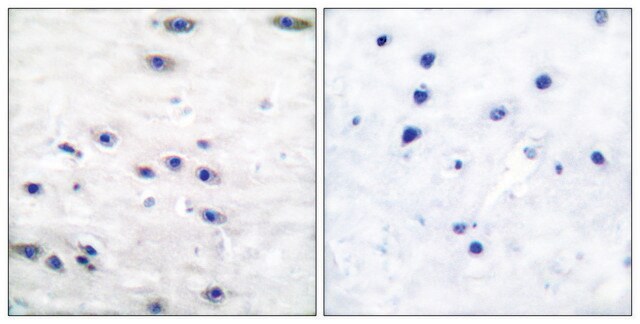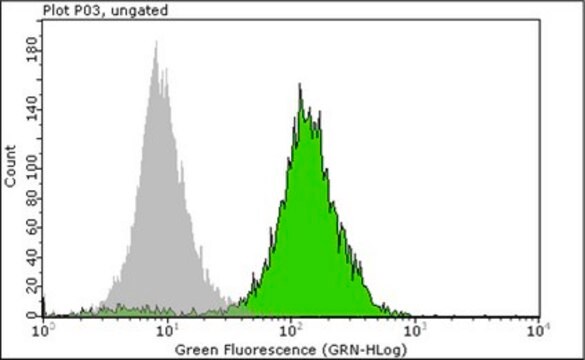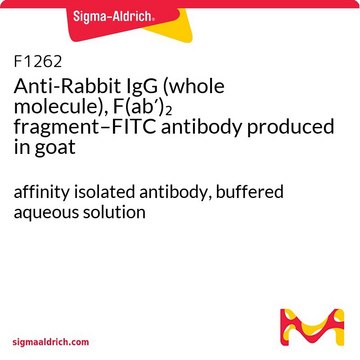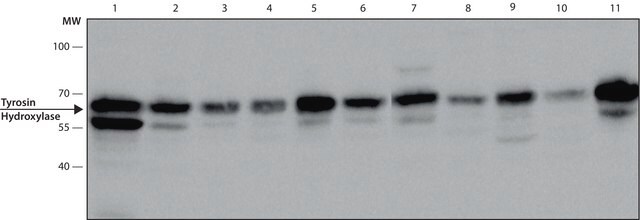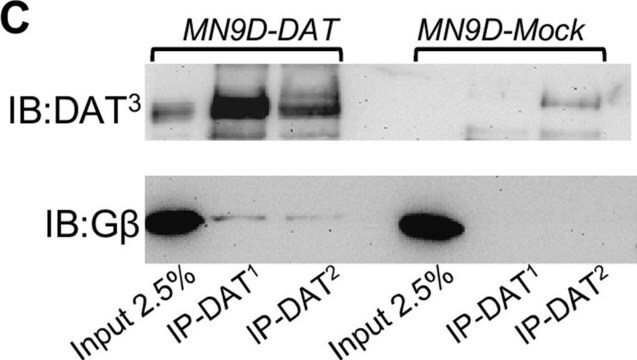AB152
Anti-Tyrosine Hydroxylase Antibody
CHEMICON®, rabbit polyclonal
Synonim(y):
Tyrosine 3-hydroxylase, Tyrosine 3-monooxygenase, tyrosine hydroxylase, TH
About This Item
Polecane produkty
product name
Anti-Tyrosine Hydroxylase Antibody, Chemicon®, from rabbit
pochodzenie biologiczne
rabbit
Poziom jakości
forma przeciwciała
affinity isolated antibody
rodzaj przeciwciała
primary antibodies
klon
polyclonal
oczyszczone przez
affinity chromatography
reaktywność gatunkowa
human, mollusk, feline, ferret, Aplysia (marine mollusc), rat, squid, Drosophila, mouse
producent / nazwa handlowa
Chemicon®
metody
ELISA: suitable
immunofluorescence: suitable
immunohistochemistry (formalin-fixed, paraffin-embedded sections): suitable
immunoprecipitation (IP): suitable
western blot: suitable
numer dostępu NCBI
numer dostępu UniProt
Warunki transportu
dry ice
docelowa modyfikacja potranslacyjna
unmodified
Opis ogólny
Specyficzność
Immunogen
Zastosowanie
A previous lot of this antibody was uesd at 1:100-1:1,000 dilution, 4°C, for 1-3 days. Stains both fresh frozen and paraffin embedded tissue samples by indirect immunofluorescence and immunoperoxidase.
Immunofluorescence:
A previous lot of this antibody was used at 1:100-1:1,000 dilution.
Immunoprecipitation:
A previous lot of this antibody was used on Immunoprecipitation.
ELISA:
A previous lot of this antibody was used in ELISA.
Optimal dilutions must be determined by the end user.
Neuroscience
Neurotransmitters & Receptors
Neuronal & Glial Markers
Jakość
Western Blot Analysis:
1:1000 dilution of this lot detected tyrosine hydroxylase on 10 μg of PC12 lysates.
Opis wartości docelowych
Postać fizyczna
Przechowywanie i stabilność
Komentarz do analizy
POSITIVE CONTROL: Brain (corpus striatum, sympathetic nerve terminals) and adrenal glands.
NEGATATIVE CONTROL: Liver.
Informacje prawne
Oświadczenie o zrzeczeniu się odpowiedzialności
Nie możesz znaleźć właściwego produktu?
Wypróbuj nasz Narzędzie selektora produktów.
Kod klasy składowania
10 - Combustible liquids
Klasa zagrożenia wodnego (WGK)
WGK 1
Certyfikaty analizy (CoA)
Poszukaj Certyfikaty analizy (CoA), wpisując numer partii/serii produktów. Numery serii i partii można znaleźć na etykiecie produktu po słowach „seria” lub „partia”.
Masz już ten produkt?
Dokumenty związane z niedawno zakupionymi produktami zostały zamieszczone w Bibliotece dokumentów.
Klienci oglądali również te produkty
Produkty
Przeciwciała łączą się z określonymi antygenami w celu wytworzenia ekskluzywnego kompleksu przeciwciało-antygen. Dowiedz się więcej o naturze tego wiązania i jego wykorzystaniu jako znacznika molekularnego w badaniach.
Poznaj różnice między przeciwciałami monoklonalnymi i poliklonalnymi, w tym sposób generowania przeciwciał, numery klonów i formaty przeciwciał.
Immunofluorescencja wykorzystuje cząsteczki fluorescencyjne sprzężone z przeciwciałami do lokalizacji białek, potwierdzania modyfikacji i wizualizacji kompleksów białkowych.
Human iPSC neural differentiation media and protocols used to generate neural stem cells, neurons and glial cell types.
Nasz zespół naukowców ma doświadczenie we wszystkich obszarach badań, w tym w naukach przyrodniczych, materiałoznawstwie, syntezie chemicznej, chromatografii, analityce i wielu innych dziedzinach.
Skontaktuj się z zespołem ds. pomocy technicznej